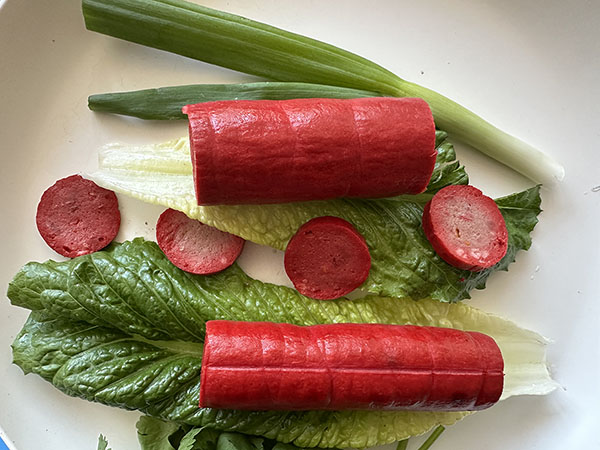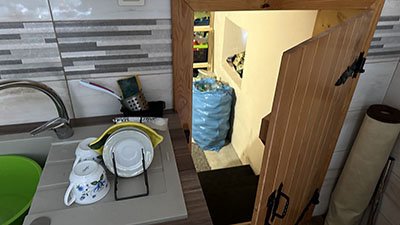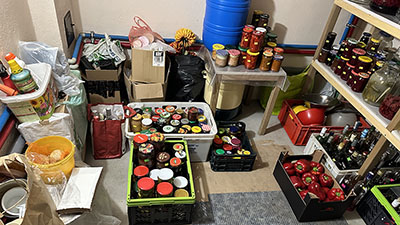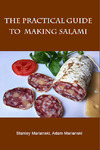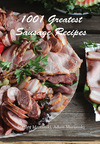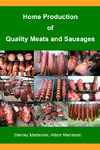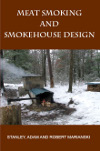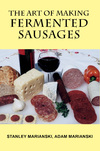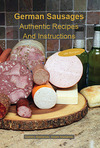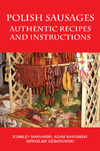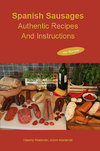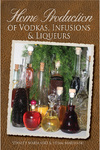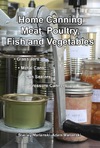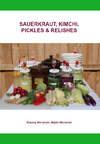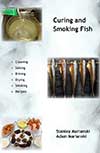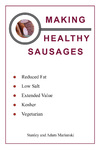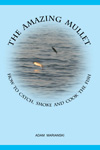Meats and Sausages
Storing Meat
All uncooked meats or sausages should be treated as fresh meat. We can keep on hand an amount that will be consumed within a few days and the rest should be frozen. A ready-to-eat product should not be stored for more than 7 days at 41° F, or 4 days at 45° F. This practice will help control the growth of Listeria monocytogenes, a harmful bacteria. Meats should be stored at 32-40° F (0-4° C). Remember that there are differences between home and commercial refrigerators and freezers:
| Home refrigerator | Butcher’s cooler |
|---|---|
| 36° - 40 F° (2° - 4° C) | 32 F ° (0° C) |
| Home freezer | Butcher’s freezer |
| 0° F (-18° C) | -25° F (- 32° C) |
Meat products stored for a long time in a freezer start developing an inferior taste due to the oxidation of fat. Those chemical changes, known as ”rancidity,” occur spontaneously and are triggered by light or oxygen. Meats stored in a freezer will turn rancid more slowly than meats stored in a refrigerator. Rancid meat is noticeable more with frozen meat than chilled meat because bacteria can spoil meat in a refrigerator well before rancidity begins. Antioxidants such as BHA, BHT, TBHQ, and rosemary extracts are commonly used to prevent fat oxidation and prolong the product's shelf life.
Storing Sausages
Cold Smoked and Dry Sausages. In the past, sausages were made differently, as meat preservation was the most important factor. The meat was cured with 2-2.5% salt and nitrate; then, it was cold-smoked for a long time. Hot smoking only prevents the growth of bacteria on the outside, so it is not a strong preserving factor; however, cold smoke can penetrate meat thoroughly, providing it continues for a long time. During cold smoking, the meat loses a lot of moisture and becomes safe because of drying.
Traditionally made salami-type dry sausages are not cooked but dried only and can be stored at room temperature. Whether they are smoked or not matters little, as the drying makes them safe.
Hot Smoked and Cooked Sausages. Hot smoked sausages don't lose enough moisture to be considered safe, however, they are fully cooked, usually to 160° F (72° C) internal temperature. This kills bacteria, making sausages safe for a while. However, new bacteria will attack the meat again, so the sausages must be kept in the refrigerator or the freezer. Cold-smoked and dry sausages can be kept at room temperature if the temperature is below 59° F (15° C) and less than 60% humidity. They, of course, can be refrigerated or frozen.
Cooked Sausages. All other cooked sausages such as liver and blood sausages, head cheese, sausages made with filler material, vegetarian sausages, and others, must be refrigerated or frozen.
Fresh Sausages. These sausages have the shortest life and, after stuffing, should be consumed or placed in the refrigerator or the freezer. They are usually fried, barbecued, or grilled.
Note. Hot smoked sausages that were cured with nitrite will last even longer due to the preserving effects of salt, nitrite, and smoke. The amount of salt that was added would be a deciding factor, as well as the amount of moisture that the sausage contains. If salt was applied at 2.2% (22 g/kg of meat) or more, the cured, hot-smoked, and fully cooked sausage should keep on drying whether kept in the refrigerator or kitchen pantry as long as the temperature is below 59° F (15° C), and less than 60% humidity. The sausage becomes semi-dry, then dry sausage that is microbiologically safe. This is how European sausages were stored when the Second World War ended, and there was no refrigeration.
- In vinegar, occasionally, some citric acid and spices were added. Sausages and hard-boiled peeled eggs are sold still nowadays.
- Cooked sausages were immersed in lard and kept in closed containers, which was popular in Cuba and other countries. The fat contains only around 15% water and a little connective tissue, whereas the meat contains around 75% water and plenty of nutrients such as proteins, minerals, and vitamins; bacteria have little reason to attack fat. The lard would be used for daily cooking and sausage would be removed as needed.
A popular Czech and Slovak sausage, Utopence is stored in vinegar.
Root Cellar
When the Second World War ended in 1945, most European countries were heavily damaged. In countries such as Poland, Germany, and Russia, many cities were 80% damaged and looked like a pile of bricks. Needless to say, there were no refrigerators around, so people resorted to traditional methods of food preservation and storage. In newly built houses, below the ground floor was a corridor where each family had their own storage unit about 2 x 4 meters (7 x 13 feet). This unit was basically a root cellar where people kept potatoes, cabbage, onions, self-made jams, lard, and wine. Smoked meats and sausages were usually kept in the kitchen, usually in a dedicated pantry. It should be noted that the climate in Northern European countries is similar to the one in Canada, and the average room temperature was between 60-68° F (15-20° C). This very practical solution of storing food in pantries or root cellars continues today in the cities and on farms all over the world.
What is Root Cellar
A root cellar is also known as an earth cellar and is a structure, built underground or partially underground, and used for storage of foods. A wide variety of foods and alcohols, fresh, salted, canned, or self-made, can be stored for weeks to months, depending on climatic conditions.

